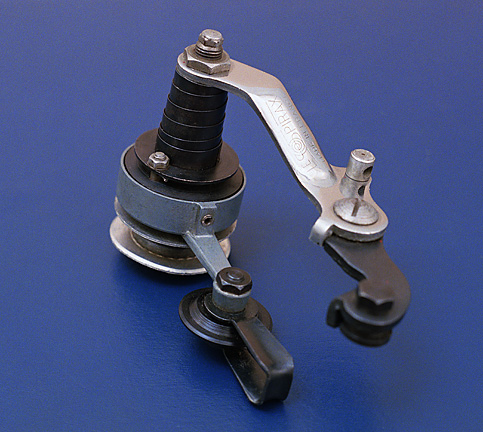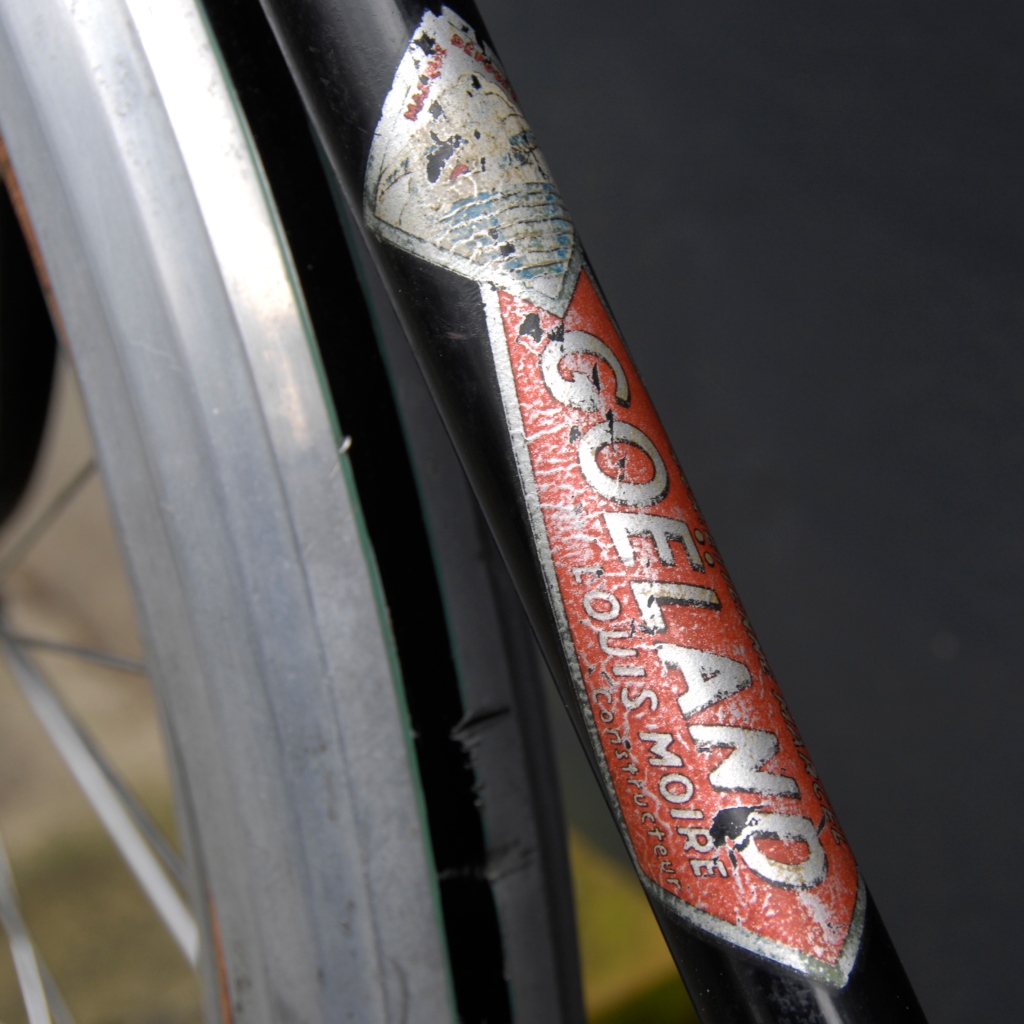


Raymond Bon was one of René Herse’s team riders. In the late 1940’s he designed the Spirax derailleur, seemingly quite a revolutionary gear. The main principle of the design was to maintain even chain tension throughout the gears.
One of the disadvantages of the Cyclo gear, as used by most touring cyclists of the period, was that chain tension was uneven, being maintained only by the long spring attached between the derailleur and a lug on the chainstay. The Cyclo also had a ‘dual’ cable arrangement which is a little tricky to set up. Bon did away with both these disadvantages in his design. The gear still moved along a rod with a helical groove, like the Cyclo, but the visible flat coiled spring returned the gear along the rod using its tension. This meant that only a single cable was needed for actuation. There was a second coiled flat spring concealed inside the metal casing, which maintained the chain tension.
It could handle a wide range of gear and chain-wheel sizes, 12 teeth at the rear and 20 teeth at the front. The lever was ‘indexed’ by virtue of a captive ball bearing clicking into the holes in the drilled washer as illustrated in the drawing by Daniel Rebour below. It was also said that the gear could handle a six speed rear block, making it possibly the first six speed gear.
It appears that the gear was available from about 1950 to 1956. Despite the theoretically sophisticated and revolutionary design, it is rarely seen fitted to bicycles of the period. You can see one on a Herse dating from 1950 on pages 156/7 of Jan Heine’s book on René Herse, and also to my Goëland below. So why was it not a great success? I can only assume that in practice it perhaps didn’t live up to expectations. At present I am having difficulty getting enough chain tension on my one!
Do any readers have recollections of this gear and can they perhaps can shed some light on its shortcomings?
Photo’s of NOS Spirax gear reproduced with the kind permission of Chris Protopapas.
















You must be logged in to post a comment.